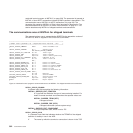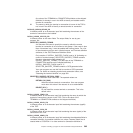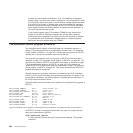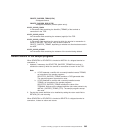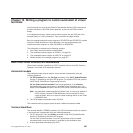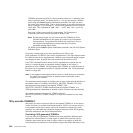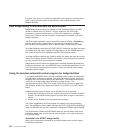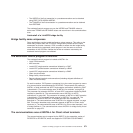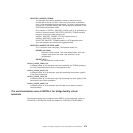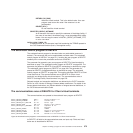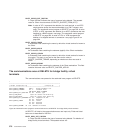
same AOR. However, if you are using CICS-generated TERMIDs, your server
programs must not rely on TERMIDs being allocated consistently to particular Client
terminals.
A Client terminal can be deleted by a Client sending a CICS_EpiDelTerminal
request, by an end user shutting down a Client terminal emulator or the Client itself,
or if a connection failure occurs.
3
When it is reinstalled, CICS does not
necessarily generate the same TERMID as it had previously. This could create
problems if, for example:
v Your server programs derive temporary storage queue names from the TERMID
(to associate each queue with a particular end user). Problems of data mismatch
could occur if the queue is not deleted by transaction end (possibly due to a
failure).
The best solution is for your application programs always to check before
creating a temporary storage queue whether a queue of the same name already
exists, and, if so, to delete it. However, if you have a large number of server
applications, it may not be possible to check or change them all.
v Your server programs record TERMIDs for later use. For example, an application
might issue an EXEC CICS START TERMID command, with a time interval after
which the transaction is to be initiated against the named terminal. If, during the
delay interval, the virtual terminal is deleted, and re-installed with a different
TERMID, the started transaction could fail because the TERMID no longer exists.
If your server programs cannot be rewritten, it may be necessary for your autoinstall
control program to create aliases for the CICS-generated TERMIDs. It could, for
example, use a mapping file to relate particular aliases to particular Client
workstations (identified by connection name).
If your server programs are located on a back-end AOR, the autoinstall control
program is invoked in the AOR when a virtual terminal is shipped in, just as for any
other shipped definition. It can, if necessary, allocate an alias terminal identifier to
the shipped definition. (For details of writing a control program to install shipped
definitions, see Chapter 14, “Writing a program to control autoinstall of shipped
terminals,” on page 559.)
Overriding Client-specified TERMIDs
If TERMIDs are always nominated, in a consistent way, by your Client EPI
programs, the problem of data mismatch due to server programs recording
TERMIDs should not occur.
However, Client-specified TERMIDs could clash with non-Client remote TERMIDs;
or, if several Clients are attached to the same CICS system, with each other. If this
occurs in the region on which the CTIN transaction runs, for consistency your
autoinstall control program may need to allocate alias TERMIDs, rather than relying
on the aliases provided by CICS. (That is, it may need to relate particular TERMIDs
to particular Client workstations, as previously described.)
3. Definitions of Client virtual terminals are not deleted by the CICS Transaction Server for z/OS, Version 3 Release 2 timeout delete
mechanism that operates on shipped terminal definitions. That is, the timeout delete mechanism does not operate on the (remote)
definitions of Client terminals on the CICS Transaction Server for z/OS, Version 3 Release 2 system on which the install Client
terminal transaction (CTIN) runs. It does operate on Client definitions that are shipped to a back-end CICS/ESA 4.1 or later
system.
Chapter 15. Writing a program to control autoinstall of virtual terminals
569




